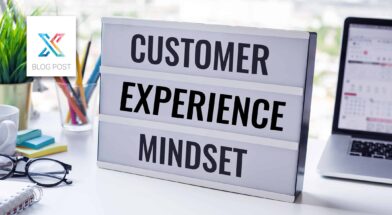Ever wonder why clients don’t tell us exactly what they need? How are we supposed to deliver to their expectations without clear direction? And what is all this guesswork doing to our bottom line? These are crucial questions you should be asking yourself—because if you’re not, you might be missing out on opportunities to boost profitability.
Case Study: Over-Delivery at a Cost
A 400-person construction firm recently sought feedback from its top 50 clients using Client Savvy’s unambiguous perception meter within the Client Feedback Tool. The goal? To see if they were delivering what was expected from the client and the client’s overall perception of the firm. Firm leadership planned to use the data and analytics to determine their top strategic priorities and “Best Practices” for the firm.
What they discovered was surprising.
Thirty out of fifty clients—60%!—responded that the firm was delivering "way above expectations" across several areas, including project budgets, schedule management, quality and accuracy of information shared, and most importantly, helpfulness and responsiveness. On the surface, this sounds great, right?
Not so fast!
The Hidden Costs of Overdelivering
While exceeding expectations may delight clients, data from over 500,000 client perception surveys show that consistently delivering more than what’s expected can actually be harmful to profitability. Substantially exceeding expectations means you are possibly giving your clients much more than they ever asked you to deliver. The firm discovered that their habit of "over-delivering" without adjusting their scope of work had significantly eaten into profits.
When leaders analyzed the data, they realized that many project managers (PMs) were going above and beyond—completing tasks that weren’t necessary or requested. These "nice-to-haves" were not part of the agreed project scope, so the firm wasn’t billing for them.
The Domino Effect on Profitability
This overproduction led to a series of unintended consequences:.
- Unbilled Hours: Team members spent extra time on out-of-scope work without charging clients, hurting project profitability.
- Opportunity Cost: PMs and team members were tied up on tasks outside the scope, limiting their availability for billable work on other projects or business development.
- Burnout: Project Managers (and their teams), not knowing what the clients’ perceptions were, mistakenly overproduced to “keep clients happy.” PMs took on unnecessary stress, working late nights and weekends, leading to good employees “on the edge,” turning to conflict instead of collaboration. Increasing stress and toxicity on the team resulted in higher than desired turnover within the department. The cost to the firm of this turnover (on average of $75,0001 per loss) clearly hurt their profits and morale.
Key Questions to Ask
So, how can you avoid making assumptions about what your clients want? Consider these critical questions:
- How will you confirm client expectations instead of guessing and avoid the common mistake of over (or under) serving the client?
- How can you ensure all front-line employees understand and manage client expectations?
- Should you scale back services to match expectations or adjust pricing to account for the extra value you’re delivering?
The Risk of Assumption
In professional services, misunderstanding a client’s needs can cost tens of thousands of dollars. One firm found they’d mispriced a project by $250,000 due to over-delivery. Multiply that loss across 60% of your projects, and you’re looking at a significant hit to your profitability.
The Path to a Solution: Create a Client Experience (CX) Playbook
Your firm needs a Client Experience (CX) Playbook to avoid leaving money on the table. This document should define the type of experience you want your clients to have. There is no right or wrong definition, and every firm’s definition will be different. The important piece is that everyone in your firm understands what it is and what their response should be in different situations.
Giving your team access to clear client perception insights removes the guesswork that leads to overproduction. Instead, your employees can confidently scale back, stay in scope, and still deliver a delightful client experience—without sacrificing profitability.
In short, aligning with your clients' actual needs, instead of assuming them, is key to sustainable success.
1 Apple One Turnover Calculator - https://www.appleone.com/Employers/SCALE/2018/Retain/cost-of-turnover-calculator.aspx





